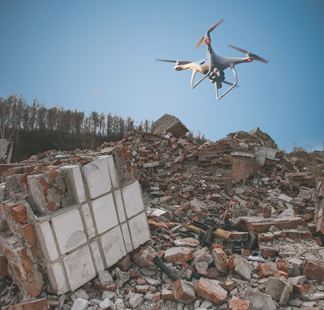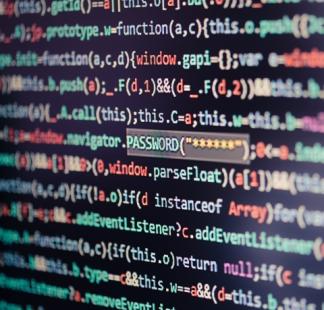- Daniel Nunes
- Rosimara Beatriz Arci Salgado
- Carlos Lugo
- Miguel Alcaine
Intermediate
Event Organizer(s)

Description
This online course aims to equip national and local government authorities with the necessary knowledge and skills to foster a techn ical understanding of the telecommunications sector, specifically focusing on wireless infrastructure deployment. Through an exploration of regulatory and fiscal aspects related to permitting approvals and processes, this course provides a holistic overview of the key principles essential for promoting investment in connectivity and bridging the digital divide. Throughout the course, participants will delve into critical topics such as infrastructure sharing, authority coordination, and sustainable development, recognizing their vital role in fostering investment and driving connectivity. By understanding these principles, public officials will gain the capacity to analyze efficient regulations that facilitate seamless infrastructure deployment, optimize the use of existing infrastructure, and streamline the installation of new infrastructure. The course places significant emphasis on technical principles that underpin wireless infrastructure deployment, empowering government leaders to make informed decisions and navigate the complexities of the telecommunications sector. Participants will gain a comprehensive understanding of the latest technological advancements, best practices, and industry standards, enabling them to assess and evaluate infrastructure proposals effectively.
The target audience for this course includes national and local government authorities responsible for policy-making, regulation, and decision-making in the telecommunications sector. This may include government officials, policymakers, regulatory bodies, urban planners, city administrators, and other professionals involved in overseeing and governing telecommunications and wireless infrastructure deployment.
By bringing together a diverse group of government officials from various levels and sectors, the course encourages cross-collaboration, knowledge sharing, and the exchange of best practices. Participants will benefit from networking opportunities and gain valuable insights from peers facing similar challenges in their respective roles.
The course is designed to cater to participants with varying levels of familiarity with the telecommunications sector. It accommodates both beginners seeking a foundational understanding of the subject and experienced professionals looking to deepen their technical expertise and knowledge in wireless infrastructure deployment.
Upon completion of this course, participants will be able to:
- Identify the technical components and requirements involved in wireless infrastructure deployment;
- Explain the key principles and regulatory frameworks governing wireless infrastructure deployment in the telecommunications sector;
- Utilize technical knowledge to analyze efficient regulations for infrastructure deployment;
- Develop strategies to promote investment in connectivity and bridge the digital divide;
- Analyze existing infrastructure to identify opportunities for efficient utilization and expansion;
- Critically evaluate the effectiveness of regulatory frameworks and policies in promoting connectivity and closing the digital divide;
- Evaluate the technological trends and innovations shaping wireless infrastructure deployment and their potential impact on connectivity;
- List what are the community management principles to facilitate the deployment of passive infrastructure projects.
To achieve the training objectives described, the course content will be covered on three main sections:
- Technical Aspects:
- Telecommunications ecosystem – definition, players, synergies;
- Terminology and technical aspects of wireless technology;
- Wireless technology developments and trends;
- The relationship between wired and wireless technologies;
- Wireless communications networks design and topology, radio spectrum, signal propagation, radiation, and related;
- Role of passive infrastructure companies;
- Wireless infrastructure deployment, including definition of monopoles, poles, macro sites, small cells, construction requirements, use of public space, structures by technology i.e. 4G and 5G.
- Best Practices
- Principle of infrastructure sharing, including definition, benefits, impact on expanding connectivity, and the need for regulatory simplification;
- What is the importance of infrastructure (passive and active) to coverage and quality of service;
- Regulatory Aspects
- Economic aspects of Wireless infrastructure deployment: ROI, capex and opex, revenue models, population density, wired technology presence;
- The role of national, regional, and municipal authorities in the deployment of wireless infrastructure like poles and other critical infrastructure;
- Best regulatory practices, including those related with EMF, to incentivize investment in critical wireless infrastructure at the national, regional, and municipal levels.
This course is based on a learning approach consisting of a number of pre-recorded videos with a duration of 30 to 40 minutes each and instructor moderation/interaction via the forum component of the course. Also, some OER videos/documents or materials will be used when applicable. Those OER are Creative Common licensed CC BY 3.0 or CC BY 4.0. These licenses only requires that users give credit to the creator. It allows users to distribute, remix, adapt, and build upon the material in any medium or format, even for commercial purposes.
For the benefit of varying instructional methods, the H5P tool is used for pre-recorded videos with embedded quizzes In addition to those videos, interactive presentations and/or OER, a number of supplementary texts/articles/webpages are provided for each video, offering learners an opportunity to deepen their understanding and explore the topics covered in more detail. The texts will be chosen to complement the offered content and provide learners with additional insights and perspectives. This methodology is intended to provide a comprehensive and interactive learning experience, enabling learners to engage with the course material at their own pace and from different perspectives.
Also, a tutor will monitor the course forum weekly to answer questions, promote relevant discussions, challenges, questions and problems, in addition to publish news on the subject. The subject matter expert will also encourage the students to share national contexts, situations - as these would be beneficial for the other participants, encouraging social learning.
The assessment and grading methodology include an evaluation through multiple-choice tests for each of the nine course modules, a final test and one open-ended question. Each test will contain five questions, each with four answer choices, with only one correct answer. The final test will contain ten questions, each with five four choices, with only one correct answer. The questions will be designed at different levels of complexity, aiming to explore the topic covered in each video. The open-ended question will be designed so that the learner can demonstrate their knowledge and opinions on a relevant topic covered during the course.
To obtain the ITU digital badge, the participant must obtain at least 70 points out of 100 total points distributed on the course activities by the following way:
- 9 Multiple choice quizzes. Total weight=40%.
- 1 open ended question Total weight=20%
- Course final test in a total of 10 questions. Total weight=40%;
Part 1 - Technical Aspects
P1.M1
- Telecommunications ecosystem – definition, players, synergies;
- Terminology and technical aspects of wireless technology;
Training activities details
- Watch a 30-40 mim. Video
- Watch the OER Video: ICT DISCOVERY: How radio works from ITU
- Watch the OER Video: Inside Wireless: QAM modulation from RF elements s.r.o
- Take the MCQ knowledge test
- Contribute to the forum weekly challenge/problem/question which would be based on the module topic AND the extra reading
P1.M2
- Wireless technology developments and trends;
- The relationship between wired and wireless technologies;
Training activities details
- Watch a 30-40 mim. video
- Watch the OER Video: How do Cellphones Work? from National Consortium for Mission Critical Operations
- Take the MCQ knowledge test
- Contribute to the forum weekly challenge/problem/question which would be based on the module topic AND the extra reading
P1.M3
- Wireless communications networks design and topology, radio spectrum, signal propagation, radiation;
Training activities details
- Watch a 30-40 mim. video
- Watch the OER Video Inside Wireless: What Is an Antenna from RF elements s.r.o
- Watch the OER Video Inside Wireless: How RF coverage works from RF elements s.r.o
- Take the MCQ knowledge test
- Contribute to the forum weekly challenge/problem/question which would be based on the module topic AND the extra reading
P1.M4
- Wireless infrastructure deployment, including definition of monopoles, poles, macro sites, small cells, construction requirements, use of public space, structures by technology i.e. 4G and 5G.
Training activities details
- Watch a 30-40 mim. video
- 1 extra reading: Wireless Infrastructure as the Foundation of Smart Cities and Communities
- Take the MCQ knowledge test
- Contribute to the forum weekly challenge/problem/question which would be based on the module topic AND the extra reading
Part 2 - Best Practices
P2.M2
- What is the importance of infrastructure (passive and active) to coverage and quality of service and the need for regulatory simplification;
Training activities details
- Interact with a 30-40 mim. dynamic course presentation
- 1 extra reading: Passive Infrastructure Sharing in Telecommunications
- 1 extra material: Latin American Telecommunications at the Crossroads of Passive Infrastructure Sharing
- Take the MCQ knowledge test
- Contribute to the forum weekly challenge/problem/question which would be based on the module topic AND the extra reading
P2.M1
- Principle of infrastructure sharing, including definition, benefits, impact on expanding connectivity.
Training activities details
- Watch a 30-40 mim. video
- 1 extra reading: Infrastructure Sharing: An Overview (https://www.gsma.com/futurenetworks/wiki/infrastructure-sharing-an-overview/)
- Take the MCQ knowledge test
- Contribute to the forum weekly challenge/problem/question which would be based on the module topic AND the extra reading
Part 3 - Regulatory Aspects
P3.M1
- Economic aspects of Wireless infrastructure deployment: ROI, capex and opex, revenue models, population density, wired technology presence;
Training activities details
- Interact with a 30-40 mim. dynamic course presentation
- 1 extra reading: Connectivity Gaps in Latin America (https://www.gsma.com/latinamerica/resources/connectivity-gaps-in-latin-america/)
- Take the MCQ knowledge test
- Contribute to the forum weekly challenge/problem/question which would be based on the module topic AND the extra reading
P3.M2
- The role of national, regional, and municipal authorities in the deployment of wireless infrastructure like poles and other critical infrastructure;
Training activities details
- Watch a 30-40 mim. Video
- Interact with a 15-20 mim. dynamic course presentation
- 1 extra reading: 5 basics of a good communications plan for community engagement projects
- 1 extra material: A Guide to Community Engagement for
- Public-Private Partnerships
- Take the MCQ knowledge test
- Contribute to the forum weekly challenge/problem/question which would be based on the module topic AND the extra reading
P3.M3
- Best regulatory practices, including those related with EMF, to incentivize investment in critical wireless infrastructure at the national, regional, and municipal levels.
Training activities details
- Watch a 30-40 mim. video
- 1 extra reading: 4G and 5G require debureaucratization and incentives (https://encr.pw/4G5GIncentives)
- Take the MCQ knowledge test
- Contribute to the forum weekly challenge/problem/question which would be based on the module topic AND the extra reading
P3.M4
Final test
Training activities details
- The final test will include all topics covered on the videos
- Take the final MCQ knowledge test
P3.M5
Open Ended Question
Training activities details
- The open ended will cover one relevant topic covered on the course
- Take the Open Ended Question











